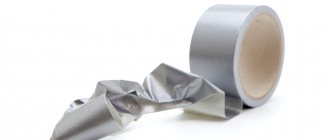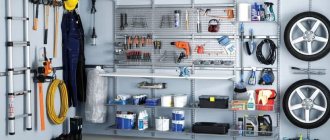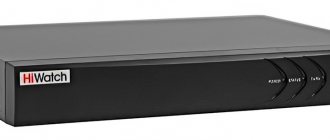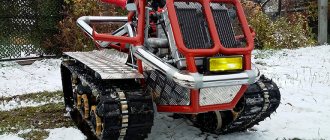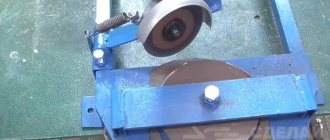Types of TV antennas
A television antenna is a device specifically designed for receiving broadcast television signals that are transmitted at frequencies from 41 to 250 MHz in the VHF range, and from 470 to 960 MHz in the UHF group.
There are two types of television antennas:
- Internal - located on top or next to the TV;
- External - installed on the roof or attic of the house.
Outdoor antennas are more complex to manufacture and install, but such devices are necessary for adequate reception in peripheral areas remote from television stations.
Antenna devices are also divided into:
- Active, which are complemented by an amplifier and require connection to an electrical power source;
- Passive, which amplify the signal only due to design features.
An outdoor TV antenna is a high input power device and has a unidirectional radiation intensity so its far end must always face the broadcast station.
Based on the wavelength that television antennas are capable of receiving, they are divided into three groups:
- MV antennas - such devices receive very long meter waves, the size of which can be from 0.5 to 1.5 m;
- UHF antennas - these devices operate in the decimeter range, in which the wavelength is in the range from 15 to 40 cm. It is in this coverage that digital television (DTV) is supplied;
- Broadband antennas are a hybrid design in which both VHF and UHF elements are installed. Such radio installations are used to receive digital and analogue broadcasts simultaneously.
The most commonly used design is an outdoor television antenna based on a log-periodic dipole matrix. Such products consist of several half-wave elements consisting of metal rods. They act as resonators in which energy is stored by radio waves, which cause electrons to move and create stable waves of oscillatory voltage. An antenna can have a different number of rod elements: the more, the higher its gain.
Another popular design, used primarily for UHF reception, is the reflective TV antenna. Such a device consists of a vertical metal screen with several dipole elements installed in front of it.
The television broadcast bands that must be covered by a single antenna are too wide in frequency, so either separate antennas or combined devices are used for the VHF and UHF bands. In such designs there are two types of elements: long elements that pick up the MF (these are located at the rear of the antenna boom and often function as a log-periodic antenna) and short elements that pick up the UHF broadcast (these are located at the front of the boom).
When you listen to the radio, you notice that local channels can be easily tuned in the FM or VHF range, but you won’t be able to catch distant foreign broadcasts on them; to do this, the receiver needs to be switched to MF and HF mode.
This suggests that meter, medium and short waves are well transmitted over long distances, while ultrashort and decimeter signals have a small coverage area. However, the disadvantage of the UHF range in which our digital television operates is minimized thanks to two things:
- Firstly, the presence of a large number of towers;
- Secondly, the ability of large objects to reflect the signal.
If you live in a private house next to a high-rise building, then it is more correct to point the TV antenna not at a distant tower, but at a neighboring house, which perfectly reflects the waves. The correct choice of direction largely determines the quality of the TV signal.
Landscape design
To implement various ideas for a do-it-yourself garden on your site, you do not always need to invest a lot of time and effort. We tried to collect for you as many simple landscape design projects as possible.
For a more comfortable pastime at your summer cottage with family or friends, you can create special recreation areas.
These can be either round or rectangular concrete platforms, or terraces made of ordinary or composite boards.
Recreation areas with a dedicated fire pit are especially popular today. It’s great to gather at such venues in the evenings. You look in fascination at the flames flying out of the fire, breathe in the fresh air - beauty!
It would also be nice to have a pond at the dacha. Throw some fish in there or make a fountain, and admire the man-made world in moments of rest and relaxation.
Moreover, it will take no more than one day to make the simplest artificial reservoir. Here's a real example.
Agree, this is a small “price” for the feeling of boundless peace that admiring the end result of your work will give.
A simple antenna for receiving digital TV
Another useful type of home antenna for the dacha is the “butterfly”. This is a very simple design, to create which you will need:
- Board or plywood about 60 cm long and 7 cm wide, thickness about 20 mm;
- Shielded copper wire with a 4 mm core cross-section;
- Coaxial cable “RK-75”;
- Washers, screws, soldering iron.
Below we provide a marking diagram according to which you need to make the base of the butterfly antenna.
Scheme
After this, prepare 8 pieces of copper wire, each 37.5 cm long. Step back 17.75 cm and remove 2 cm of the insulating layer in the center of each piece. Give them a V-shape so that the ends of the elements are at a distance of 7.5 cm from each other (this shape is considered optimal for high-quality and clear TV signal reception).
The next step is to prepare two more wire elements about 22 cm long. Mark each element into 3 equal parts and strip the wire insulation between the resulting sections.
We will need two more small pieces of wire to connect the antenna to the socket.
Now all that remains is to simply assemble all the prepared elements into a single structure and solder the cable to the plug.
This is how you can easily make your own effective butterfly antenna for receiving digital television.
For construction on your own
The topic of construction or renovation probably worries everyone. And, naturally, everyone who is involved in it wants to finish it quickly with minimal financial costs. Therefore, if you want to save money, you can make some construction materials yourself. For example, these could be wall SIP panels or such a useful tool as a vibrating plate, the need for which often arises for many owners of a personal plot.
Homemade SIP panels
To make them, you need to prepare a flat, hard platform. Place a sheet of OSB 10-12 mm thick on it using a rubber spatula with teeth, apply glue to it.
Then lay sheets of grade 25-30 foam plastic on the glue. After this, an adhesive mass is applied on top of the laid foam, as well as on the bottom OSB board, and a second sheet of OSB is laid on top.
If several stacked slabs are being made at the same time, work should be done quickly until the glue hardens. Typically, no more than 4-5 panels can be prepared in this way at a time.
After preparing the formed slabs, you need to create pressure using a press. Since at home, of course, there is no hydraulic press, it can be replaced with a thick plywood sheet laid on prepared SIP boards over the entire plane and loaded for 2-3 hours, for example, with several bags of cement, sand or other cargo. You can even use a passenger car by driving onto a plywood sheet along a pre-made overpass.
After the glue has completely dried, the homemade panels are ready; they can be placed in a separate stack and you can begin preparing new panels. The manufactured panels should lie unloaded for another day, after which they can be used for their intended purpose.
Making a vibrating plate
To make a homemade vibrating plate, you will need to prepare:
- An electric motor with an IV-98E eccentric, which is the main part of the vibrating plate.
- Steel sheet, at least 8 mm thick, size 450x800 mm. It can be ordered at any metal warehouse.
- Two pieces of channel no more than 400 mm long.
- An inch pipe for the handle and two rubber bushings for attaching it.
- The tools you will need are a welding machine, a grinder and a set of wrenches.
On the narrow sides of the slab, stepping back 80-100 mm from the edges, make an incision with a grinder to a depth of about 5 mm. After this, bend the edges towards the cut at an angle of approximately 250 and weld them. The bends are needed so that the vibrating plate does not sink into the material it compacts and moves freely along its surface.
Then, across the slab at a certain distance calculated for mounting the electric motor, two channels are welded with the shelves down. Through pre-drilled holes in the channel, using M10 bolts, an electric vibrator is attached to them.
The handle, made of pipe, is attached to the vibrator through soft rubber bushings, which can be purchased at an auto parts store or hardware store in the hardware department.
Thus, you can make a lot of useful household things with your own hands, spending only a fraction of the money that you would have to pay when buying a finished product. You just need to put in some effort and have certain skills.
To help the hostess
It is not always possible to financially buy, for example, some new furniture in a furniture showroom or place an order for its manufacture. But you can always get out of this situation by making the right thing with your own hands, and at the same time making it attractive and unique, using improvised means for this.
Kitchen apron made of corks
The kitchen apron is the surface of the wall located between the countertop and wall cabinets. Usually this part of the wall is tiled. But it is possible to use many other materials to cover it, for example, gluing wine corks to the wall.
This exclusive decor looks quite magnificent.
Before sticking, each cork is cut lengthwise into two halves with a sharp stationery knife. It is advisable to paint the wall black, which will highlight the seams between the plugs.
Corks are glued to the wall using liquid nails in a checkerboard pattern or with a certain pattern, since it is unlikely that they will be laid out perfectly evenly, and curved rows will visually look disgusting.
The plugs themselves are not afraid of moisture, but they quickly get dirty and are difficult to wash, so it is best to cover them with a glass screen made of tempered glass. True, you will have to spend a little money on it and order glass from a special workshop, where they will cut it to a given size and make holes for sockets and fasteners.
The glass is secured to the wall with anchor dowels , which can be purchased at almost any hardware store.
Although an apron decorated with wine corks may be an expensive pleasure, the result achieved will be worth it.
The surface of the tabletop, as well as the wall, can be decorated with corks and covered with tempered glass.
Hanging folding table
A folding table mounted on the wall allows you to save some space in the apartment. When folded down, it can protrude from the wall at a distance of no more than 10 cm and does not bother anyone at all, but when unfolded it can replace a full-fledged table.
There are many options where you can use a wall-mounted folding table. Here are just a few of the most basic:
- Balcony. Naturally, on the balcony the table should be small in size and attached to the screen fence. It can be used for drinking tea in the fresh air, working with a laptop or doing some handicrafts. In other words, you can provide yourself a place to do creative work without disturbing other members of your family.
- Kitchen. If the kitchen is small, a wall table will be just a godsend for the hostess. It can replace a dining table that cannot be placed due to lack of free space. In addition, it can be freely used for cooking, since its size is much larger than a balcony table.
- An ironing board is usually large and heavy, and when unfolded it can take up a lot of space. In this case, the housewife often has to pull it out of the place allocated for it, lay it out, and after ironing, repeat all the steps, only in the opposite direction. A folding table will save the hostess from these problems.
Shower for the cottage
There is probably nothing better than cooling off under running water on a hot summer day, especially if it was spent working in the garden. Naturally, only a shower will solve this problem and relieve the fatigue that has accumulated during the day.
You can install the shower yourself without involving outside help; the main thing is to choose a place for it and decide on the type of shower stall.
Among the summer showers, there are three types of cabins , which you can freely build on your own:
- Base. Consists of one shower stall, water tank and other accessories needed for a shower.
- A shower cabin, additionally equipped with a dressing room, where you can leave clothes, things and a towel, and after taking a shower, you can calmly change clothes.
- Shower cabin with dressing room and toilet. This is a good solution for a summer residence if there is no sewerage system. This saves money on the additional installation of a separate sanitary system.
Installing a simple shower is done as follows:
- A shower cabin frame is made, which can be assembled from metal, wooden beams or other available materials.
- A metal or plastic water container, which can have a volume of 50 to 200 liters, is installed on the roof of the assembled frame.
- It is advisable to paint the metal container black for better heating of the water. Additionally, several heating electric heating elements can be installed in the container, then you can take a shower even in cloudy weather.
The booth can be sheathed with boards, plywood, slate, or simply covered with tarpaulin or cellophane film with folding curtains.
Photo relay for street lamps
The photo relay is made according to the scheme, and will become a useful addition for the home. Such homemade products are designed to control street lighting.
The simplest guide:
- During manufacturing, a 7805 stabilizer and a sensor consisting of an lm358 microcircuit, a photoresistor, a tuning resistor, and a harness are placed on the board. The relay with the transistor and the power supply can be soldered separately using surface mounting.
- The board is made using LUT methods and etched in a liquid containing peroxide, citric acid, and salt. Then you need to solder the parts. It is recommended to carry the photoresistor on wires with heat-shrinkable casings.
- The power supply is performed on a transformer (output voltage - 11.1 V), a diode bridge in the housing, and a capacitor.
- You will also need a junction box to install all the elements. A screw is used to secure the board and sensor, and ties are used for the power supply and photo relay.
To connect the power, special connectors are useful.
Watch the video:
Shield and sword
How to make weapons from wood for role-playing games and historical reconstructions? If for beauty and ambiance, then it is very comfortable to cut out a shape from plywood with a jigsaw, smooth the edge, varnish, paint, insert decorations. With excellent paint, without holding the item in your hands, it will be difficult to determine what material it is made of. For combat, it is worth making a weapon from thick, strong wood, with a comfortable handle, so that the vibration from the blow is less transferred to the hand; on the contrary, it is possible to damage the hand or easily drop the object at the first hard impact.
The shield is beautifully made from plywood, but for battle it is better to use iron-bound or iron versions with a shock-absorbing lining. During reconstructions they usually show a wall-to-wall battle, in which it is very difficult to deliver a powerful blow to the shield. Excellent and strong is necessary for individual combat; for all other cases, plywood is suitable.
Rocky paths
Convenient paths will increase the comfort of the area. Walking along stone paths in the rainy season, you won’t have to get your shoes dirty. It is not necessary to search the fields for natural stones or buy paving slabs. You can create elements of decorative masonry yourself.
Before starting experiments, it is better to watch a video of the process. The finished paths do not have to be left boring gray. Stones on paths can be painted in bright colors. This will add positivity and fun to the space.
Note!
Weaving willow baskets: beautiful and unusual do-it-yourself baskets. Detailed diagram of willow weaving + photo examples of finished products
DIY gazebo - the best design ideas. Description of construction stages with step-by-step instructions for beginners + 160 photos
Capers - TOP-150 photos of types, best cooking recipes. Application options and beneficial properties + instructions on how to choose capers
If you use neon paint for coloring, you will be able to observe an unusual glow effect in the dark.
Homemade crafts for beginners
Most novice radio amateurs are engaged in the manufacture of structures that do not require high qualifications. Simple proven designs can serve for a long time and not only for the sake of benefit, but also as a reminder of the technical “growing up” from a beginner radio amateur to a professional.
For inexperienced hobbyists, many manufacturers produce ready-made construction kits that contain a printed circuit board and a set of elements. Such sets allow you to practice the following skills:
- Reading schematic and wiring diagrams;
- Correct soldering;
- Setup and adjustment using a ready-made method.
Among the sets, electronic watches of various designs and degrees of complexity are very common.
As an area of application of knowledge and experience, radio amateurs can design electronic toys using simpler circuits or modifying industrial designs to suit their wishes and capabilities.
Interesting ideas for crafts can be seen in the examples of making radio-electronic crafts from worn-out computer parts.
Coaxial cable antenna
To create this version of the antenna, you will need about 0.5 m of the most common television cable marked “RK-75”. One end of the insulated wire needs to be stripped to connect to the TV socket (put on the F-connector and an adapter for connecting to the TV), and on the second we will create a round antenna.
Step back 5 cm from the edge and remove the top layer of insulating impregnation compound. Then remove the winding from the central conductor of the cable and tightly twist the remaining wire strands into one bundle.
Next, step back 22 cm from the prepared edge of the cable and remove 2 cm of outer insulation along with shielded foil and braid, without affecting the insulation of the central core.
From this point, measure the next 22 cm and cut through the outer layer of insulation to the shielded foil. Now you need to connect the cable into a ring: to do this, we confidently screw the first prepared end to the newly created cut. That's all - you have in your hands a powerful antenna made of coaxial cable, made by yourself.
Connect it to the TV and start tuning channels. This antenna is considered a good option for receiving digital television. It is better to install the antenna outside the window and on the side of the TV tower, since the walls of the building can drown out the desired signal. You can experiment with its position yourself.
Making a Club
The most primitive weapon made of wood is a club or stick. What could be simpler, break off a branch and you're done. But if you suddenly decided to take this issue seriously, you wanted to make a strong, light, comfortable product, then you are faced with the question “how”. Making a weapon out of wood according to every rule is difficult. For the club, choose a young tree of suitable size. They cut down closer to the root, because at the butt the fibers begin to intertwine, making the material even stronger. Then, carefully, so as not to damage the top layers, remove the bark, cut off the knots, give the handle the desired shape, and if necessary, soak the workpiece in water or special brines for a day. Then the drying begins, a fire is lit and, in the smoke, protecting the coming club from the flames, they dry it. As soon as the tree has turned black, the blackness is removed with fine sand or hard grass. This is repeated six times, the surface becomes smooth and dry. Even if birch was chosen, the final product will be light and strong. Such wood does not rot. According to the same thesis, our ancestors made strong arrows and spears without steel tips.
Homemade products in the kitchen
Kitchen electronics crafts can be a complement to existing accessories and fixtures. Industrial and homemade electric kebab makers are very popular among apartment residents.
Another common example of kitchen homemade products made by a home electrician is timers and automatic switching on of lights above work surfaces, and electric ignition of gas burners.
Important! Changing the design of some household appliances, especially gas appliances, may cause “misunderstanding and rejection” by regulatory organizations. In addition, it requires great care and attention.
sprays
This product is not just for beauty because you can use its flammable materials to start a fire. What you need to do is use a lighter to light the fire before spraying fire with hair spray on the aggressor's face, making it a perfect flamethrower that can save your life.
You can easily store this homemade weapon in your pocket or bag and take it out when you encounter danger and want to deactivate and/or blind an attacker. But make sure that the container does not get too close to the fire, as it may also explode and harm you.
Firearms mockups
No matter how much one would like to, it is unthinkable to make a homemade firearm out of wood that will shoot. Maybe for one or two shots, and it’s not a fact that the weapon won’t explode when the gunpowder explodes.
All self-propelled schemes are reduced to one algorithm. The tree is a frame to which the barrel is attached, a trigger mechanism with a spring, and occasionally a magazine is added. Inconvenient, short-lived, but cheap and fierce.
Material selection and processing
The choice of material determines how much processing time will be required. Birch is a very strong and unruly tree; it is excellent for making a club; without special processing the product will be heavy. Aspen, poplar, and pine are softer and easy and pleasant to work with. Oak is rare in many regions of Russia, but if you decide to make a weapon with your own hands from wood, you are unlikely to find a cooler material. It is easier to process than birch, light in weight and stronger than pine, and wonderfully preserves its quality over time. The wood for the products must be free of knots, wood holes, rot, with a consistent fiber direction, and without curvature. You need to dry it, preferably in a dry room or under a canopy. It is necessary for the wood to dry evenly without direct exposure to bright rays, otherwise it will then begin to crack and bend.
Figure-of-eight antenna
The next option for creating a simple UHF television antenna is named after the shape of its design, “figure eight” or “zigzag”. Such a device will reliably pick up the signal even in a remote village.
In order to make an outdoor antenna for digital television with your own hands, you will need:
- Amplifier (you can use any old one);
- 2 pieces of copper wire (180 cm each);
- Plate (wood or metal) 15*15;
- TV cable;
- Iron mast for raising the antenna.
First of all, we create the body of the catcher: from copper wire we form two rhombuses with an optimal side size of 45 cm each. We attach the ends of the two elements to the plate: we form a ring from the core and slightly flatten it, screw it with bolts or solder it using a soldering machine.
We connect the amplifier and insert the cable plug into the connector. In general, that's all. All that remains is to install the finished structure on an elevated mast, which must be firmly dug into the ground.
To make an outdoor antenna for a TV, any conductive material of the appropriate cross-section is suitable: copper or aluminum tubes, strips or a profile element with a thickness of 1 to 5 mm. The main thing is to give the antenna body the correct shape.




